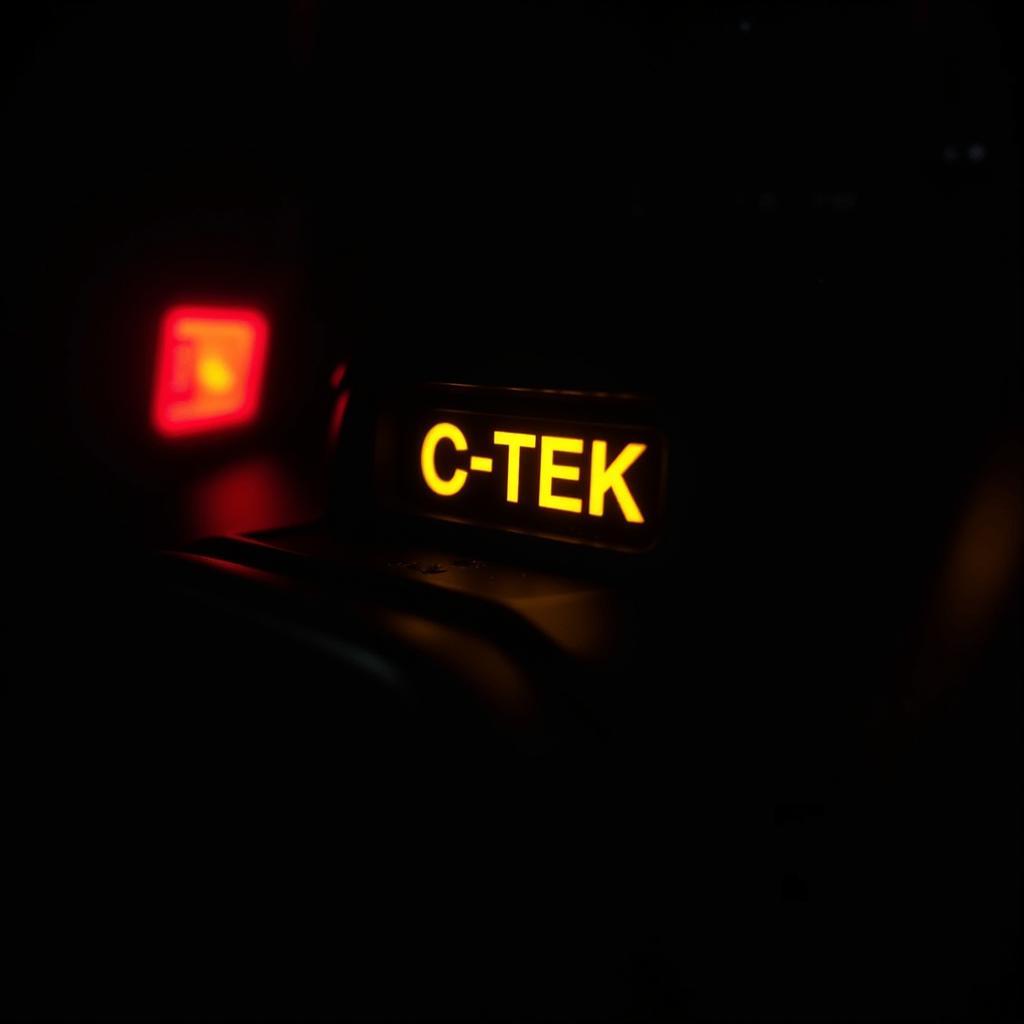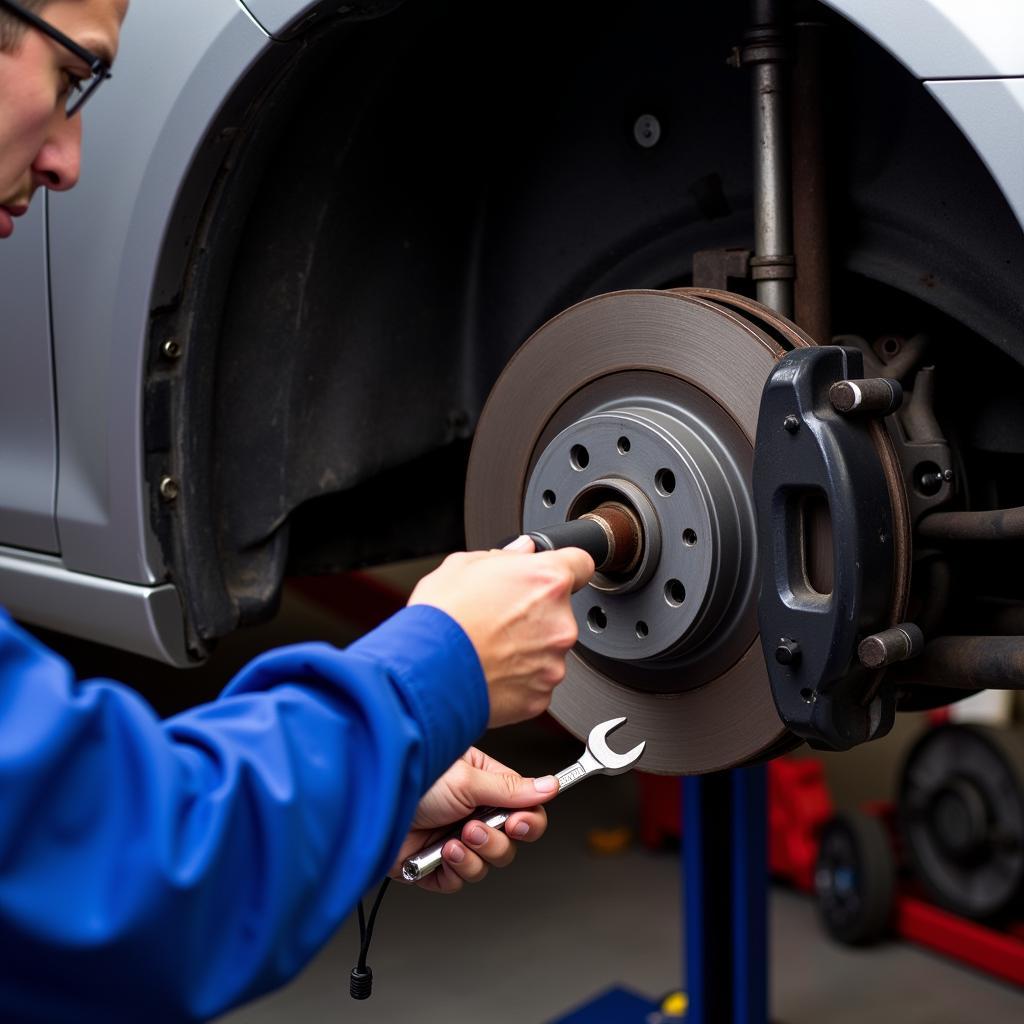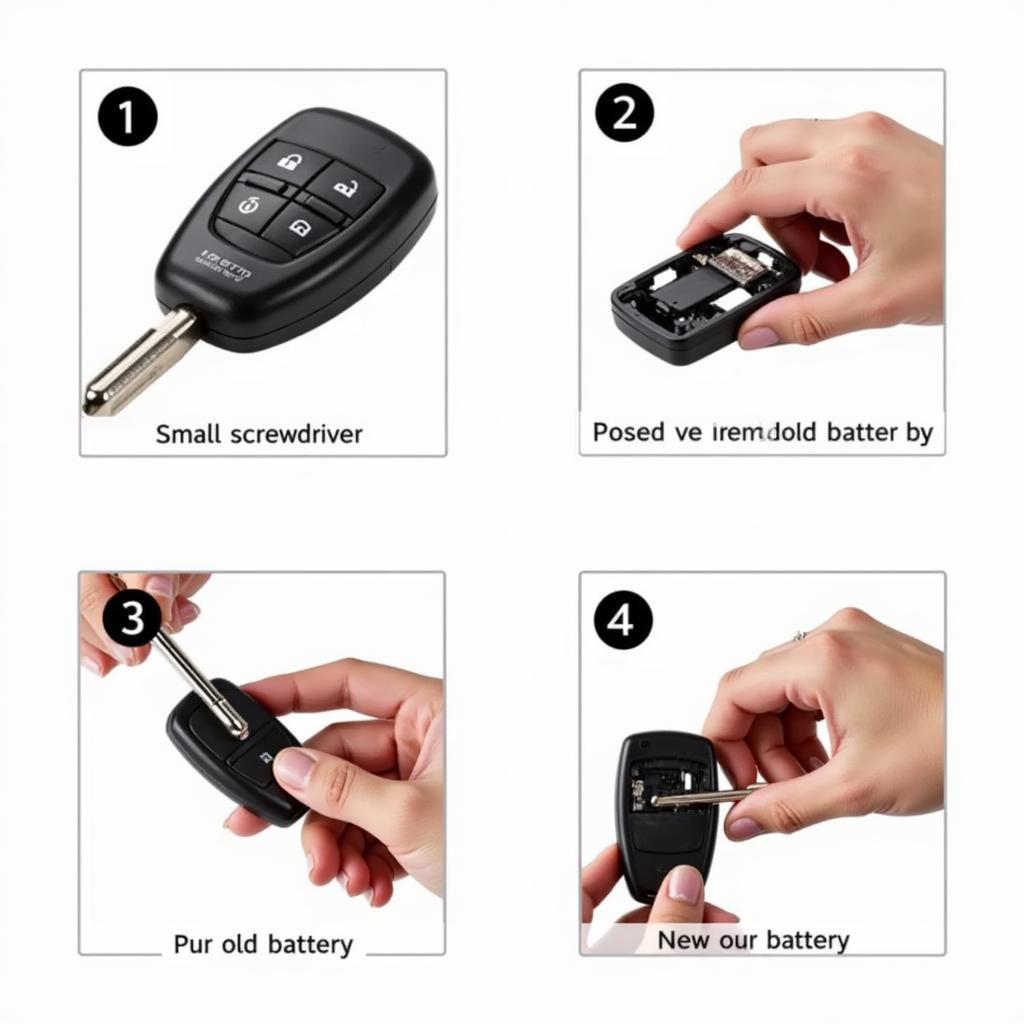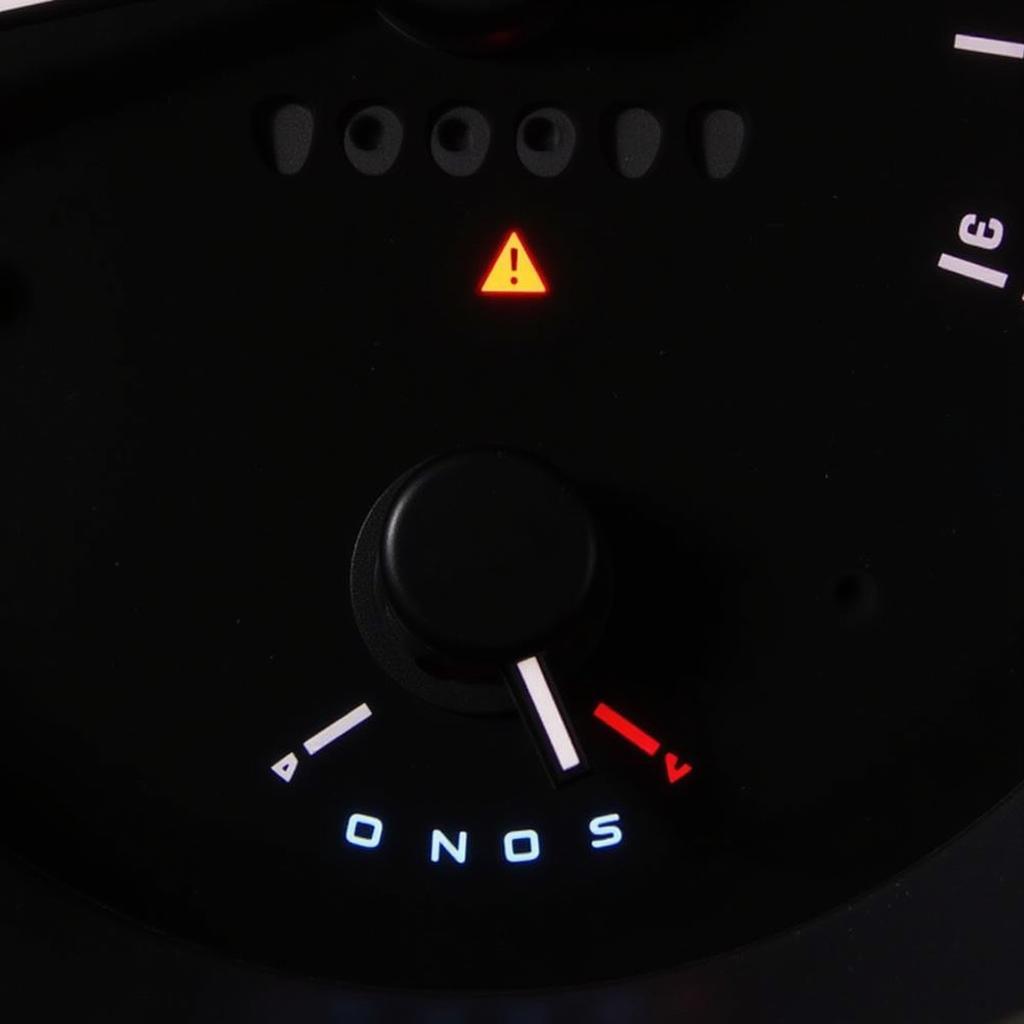A “C-TEK” warning light on your dashboard, often accompanied by a brake warning light, can be a cause for concern. This warning usually indicates an issue with your vehicle’s electronic parking brake system, commonly known as the C-TEK system. While it may seem alarming, understanding the common causes of this warning and the necessary steps to address them can save you time, money, and potential headaches down the road.
 C-TEK warning light on a car dashboard
C-TEK warning light on a car dashboard
Understanding the C-TEK System
The C-TEK system, commonly found in modern vehicles, replaces the traditional handbrake lever with an electronic button. This system automatically engages and disengages the parking brake using electronic motors mounted on the rear brake calipers. While offering convenience, the C-TEK system relies on various components, including:
- Electronic Control Unit (ECU): This unit is the brain of the system, receiving signals from sensors and controlling the brake motors.
- Wheel Speed Sensors: These sensors monitor the rotational speed of each wheel, providing data to the ECU.
- Brake Pedal Switch: This switch sends a signal to the ECU when the brake pedal is pressed.
- C-TEK Button: Located on the center console or dashboard, this button allows the driver to manually engage or disengage the parking brake.
- Brake Calipers with Motors: These calipers house the electric motors responsible for applying and releasing the parking brake shoes.
A malfunction in any of these components can trigger the C-TEK warning light.
Common Causes of the C-TEK Warning Light
Several factors can activate the C-TEK warning light, ranging from minor glitches to more serious mechanical issues. Here are some of the most common culprits:
1. Worn Brake Shoes
Just like traditional brake systems, the brake shoes in a C-TEK system are subject to wear and tear. As you apply and release the parking brake, the friction material on the shoes gradually wears down. When the brake shoes reach a certain level of wear, the C-TEK system may detect the reduced braking force and trigger the warning light.
2. Faulty Wheel Speed Sensors
The C-TEK system relies on accurate data from the wheel speed sensors to function correctly. If a sensor malfunctions or becomes dirty or damaged, it may send incorrect signals to the ECU. This can disrupt the system’s ability to determine wheel speed and potentially lead to a C-TEK warning.
3. Malfunctioning Brake Pedal Switch
The brake pedal switch plays a crucial role in disengaging the parking brake when you start driving. If this switch fails, the ECU might not receive the signal that you’re pressing the brake pedal, preventing the parking brake from releasing and triggering the warning light.
 Mechanic inspecting brake shoes on a car
Mechanic inspecting brake shoes on a car
4. Issues with the C-TEK Button
While less common, problems with the C-TEK button itself can also trigger the warning light. Over time, the button’s electrical contacts may wear out or accumulate dirt, leading to a poor connection. This can prevent the button from sending a clear signal to the ECU, resulting in a malfunctioning parking brake system.
5. Software Glitches
Like any electronic system, the C-TEK system relies on software to function. Occasionally, software glitches or errors can occur, disrupting the system’s operation and activating the warning light.
What to Do When the C-TEK Warning Appears
Ignoring a C-TEK warning light can lead to further damage and potentially dangerous driving conditions. If you see this warning on your dashboard, it’s crucial to take the following steps:
-
Consult Your Owner’s Manual: Your vehicle’s owner’s manual is your best resource for specific information about the C-TEK system in your car model. It will provide guidance on what the warning light means and any immediate actions you should take.
-
Park in a Safe Location: If possible, find a safe and level location to park your vehicle as soon as possible. This will help prevent your car from rolling if there’s an issue with the parking brake’s holding force.
-
Check the Parking Brake Functionality: With the engine off and the transmission in “Park” or “Neutral,” try to move your vehicle. If you can move your car easily, it indicates a problem with the parking brake’s holding ability.
-
Avoid Driving: If the C-TEK warning light persists or you notice any issues with your parking brake’s functionality, it’s best to avoid driving your vehicle and seek professional assistance.
Seeking Professional Help
Diagnosing and repairing a C-TEK system requires specialized knowledge, tools, and experience. Attempting DIY fixes can potentially worsen the issue and even pose safety risks. A qualified mechanic with expertise in electronic parking brake systems can:
-
Accurately Diagnose the Problem: Using advanced diagnostic tools, they can pinpoint the root cause of the C-TEK warning, whether it’s worn brake shoes, faulty sensors, or software issues.
-
Perform Necessary Repairs: Based on the diagnosis, they can replace worn brake shoes, repair or replace faulty components, or update the system’s software.
-
Ensure Proper System Function: After repairs, they will thoroughly test the C-TEK system to ensure it’s functioning correctly and safely.
Preventing Future C-TEK Issues
While some C-TEK issues are unavoidable due to wear and tear, you can take proactive measures to minimize the risk of encountering problems:
-
Regular Brake Inspections: Include a thorough inspection of your C-TEK system during routine brake maintenance. This allows mechanics to identify potential issues early on, such as worn brake shoes or faulty sensors.
-
Timely Repairs: Address any brake-related issues promptly. Ignoring minor problems can escalate into more significant and costly repairs later.
-
Avoid Overloading Your Vehicle: Excessively heavy loads put additional strain on your vehicle’s braking system, including the C-TEK system. Avoid overloading your car to minimize wear and tear on the brake components.
Conclusion
The C-TEK warning light, although concerning, doesn’t necessarily spell disaster. By understanding the system, recognizing common causes, and taking appropriate action, you can address the issue effectively and ensure your vehicle’s safety and reliability. Always prioritize professional diagnosis and repair for any C-TEK warning to prevent further complications and ensure the longevity of your electronic parking brake system.


